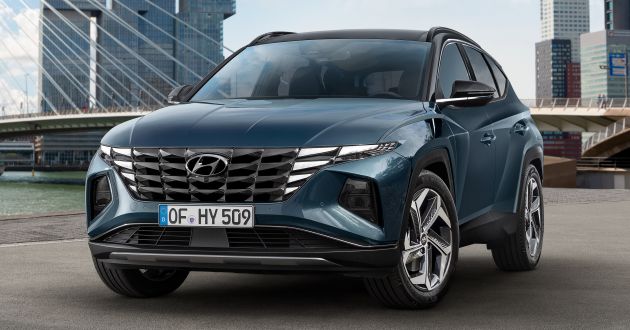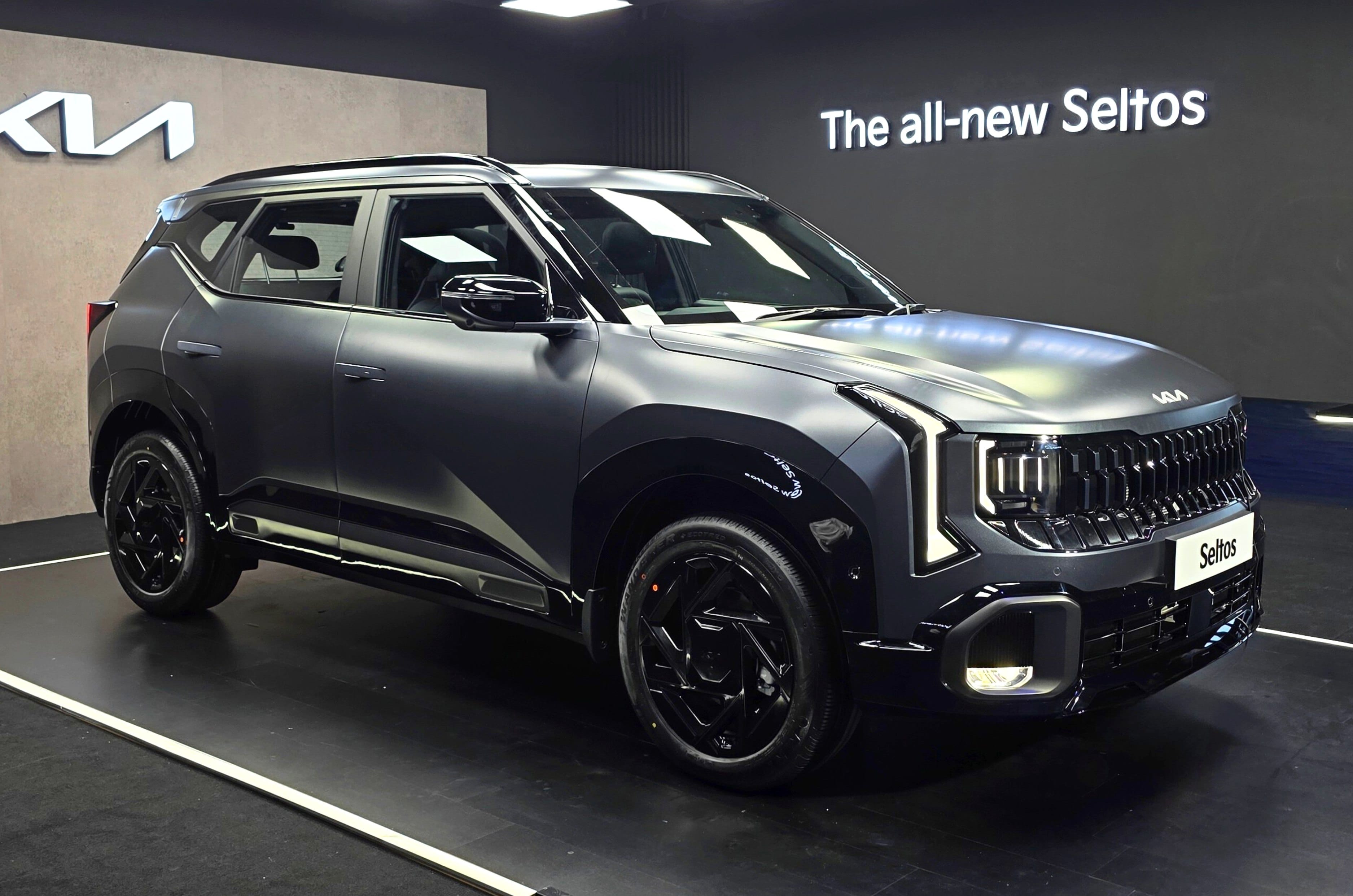2021 Hyundai Tucson – fourth-gen SUV breaks cover
Hyundai has taken the wraps off its all-new Tucson, which will go on sale in Korea starting from this month. As intimated by teaser shots earlier this month, the design of the fourth-generation compact SUV is a striking departure from the previous iteration, looks-wise.
On this one, the interpretation of the automaker’s “Sensuous Sportiness” design language adopts what the company calls a “parametric dynamics” look, with plenty of kinetic jewel surface details.
The parametric grille offers the SUV a distinct front, and you certainly won’t mistake the Tucson for anything else, viewed from the front. The slim headlights merge seamlessly into the jewel-shaped grille, which cleverly integrates half-mirror type daytime running lamps that are only revealed when illuminated.
The kinetic design theme continues at the rear with a full-width tail lamp assembly, which incorporates half-hidden triangular shapes that are only visible when lit, echoing the lighting theme at the front. To make space for the uninterrupted light bar, the automaker has moved the brand logo up into the rear screen area, and the rear wiper now hides under the rear spoiler to provide a cleaner look.
In all, the new Tucson projects a coupe-styled outlook with its shape, with plenty of chiseled surfaces and angular wheel arches to give it a bold, dynamic look. Design aside, Hyundai says that the Tucson will be available in both short and long wheelbase versions, depending on the region. This is to meet diverse market needs.
Inside, you’ll find an “Interspace” cabin, which is led by a layered dashboard styled in wrap-around fashion, with twin silver garnish lines that extend to the doors. There’s a hoodless digital instrument cluster and a flat, button-less centre fascia.


As standard, the dual-screen centre panel comes fitted with an eight-inch colour touchscreen with Apple CarPlay and Android Auto support sitting on top of a full touchscreen cimate control panel. The party piece is a 10.25-inch touch navigation display, which offers split-screen functionality and enhanced voice recognition.
Also to be found is a Bose Premium audio system, a 64-colour ambient mood lighting adjustable to 10 levels of brightness as well as a Multi-Command function, which allows drivers to pre-ondition the interior of the car with a single voice command.
The Tucson also features Hyundai’s Digital Key, in which a Near Field Communication (NFC) capable smartphone can be utilised as a smart key to lock/unlock the vehicle, activate the panic alert and start the engine and its climate control system from up to 28 metres away.
Optional equipment available in select markets include an air purification system for the climate control system and a new Car-to-home feature, which allows drivers to remotely control smart home appliances such as lights and air-conditioning from the car in preparation for the arrival home.
At point of introduction, the Tucson will be available with two powertrain choices. The petrol unit is a Smartstream 2.5 litre direct-injected four-cylinder NA engine offering 190 PS and 260 Nm, paired with an eight-speed automatic transmission.
The other is a turbocharged 1.6 litre four-pot, which will feature in hybrid or plug-in hybrid versions of the Tucson. The mill produces 180 PS and 264 Nm, and coupled to an electric motor combined system output is 230 PS and 350 Nm.
The Tucson will be available in front-wheel drive and HTRAC all-wheel drive forms, with the hybrid and PHEV versions also coming equipped with E-Handling technology, which the automaker says helps improve steering response and directional stability when cornering or in adverse driving conditions.
In terms of safety, the Tucson is pretty much loaded with it, with the automaker’s SmartSense safety feature suite comprehensively packed with highway driving assist (HDA), forward collision-avoidance assist (FCA) with pedestrian detection, lane keeping assist (LKA) and lane following assist (LFA) and a blind-spot view monitor as standard. Also on the list are high beam assist and a surround view monitor.
While domestic sales start from this month, buyers in other markets will have to wait until next year before they can get their hands on the fourth-gen Tucson – global sales for the SUV will begin from the first half of 2021. According to Hyundai, a N Line version of the Tucson is planned sometime in the future.















The post 2021 Hyundai Tucson – fourth-gen SUV breaks cover appeared first on Paul Tan's Automotive News.
from Paul Tan's Automotive News
Read The Rest:paultan...






Post a Comment